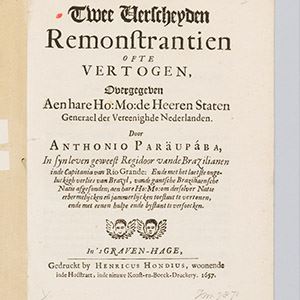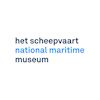
16. Oost 1, Maps & Marvels: Two petitions by Antônio Paräupába
This book contains two petitions from the Brazilian Antônio Paräupába. In these petitions, Paräupába asks the Dutch government for support for his people, the Potiguars, who came from the Ceará region of north-eastern Brazil. The Potiguars were now back under Portuguese rule. Paräupába had worked for the West India Company in the former colony of Dutch Brazil, as a representative and military leader. Antônio Paräupába is one of the few Brazilians from this time whose name we still know. He travelled to the Dutch Republic three times, which is where he learned to read and write Dutch. In contrast to the Portuguese, the Dutch had not enslaved the Potiguars, instead making them allies in the fight against their common enemy, Portugal. Compared to life under the Portuguese , the Potiguars enjoyed a certain degree of independence under Dutch rule. In 1654, after 25 years as a Dutch colony, the Portuguese had reconquered the territories on the east coast of Brazil. The Potiguars feared reprisals from the Portuguese, because they had supported the Dutch for so long. Facing this new and dangerous situation, Paräupába fled to the Netherlands. Unfortunately both his pleas were ignored by the legislature of the Netherlands, the ‘States General’. They wanted to wash their hands of Brazil and its indigenous inhabitants. Paräupába was granted a military pension, but died shortly after submitting his second petition.


The National Maritime Museum
Het Scheepvaartmuseum (The National Maritime Museum) shows the strong connection between the maritime world and society as a whole, and more specifically the impact of this on the lives of many individuals. The collection of The National Maritime Museum is one of the largest and most notable maritime collections in the world with approximately 400,000 objects, including paintings, models of ships, navigation instruments, and maps of the world. Discover 500 years of Dutch Maritime history as well as its strong links to today’s society and the society of the future.
- Kattenburgerplein 1
- Amsterdam Netherlands
- (020) 52 32 222
- www.hetscheepvaartmuseum.nl
